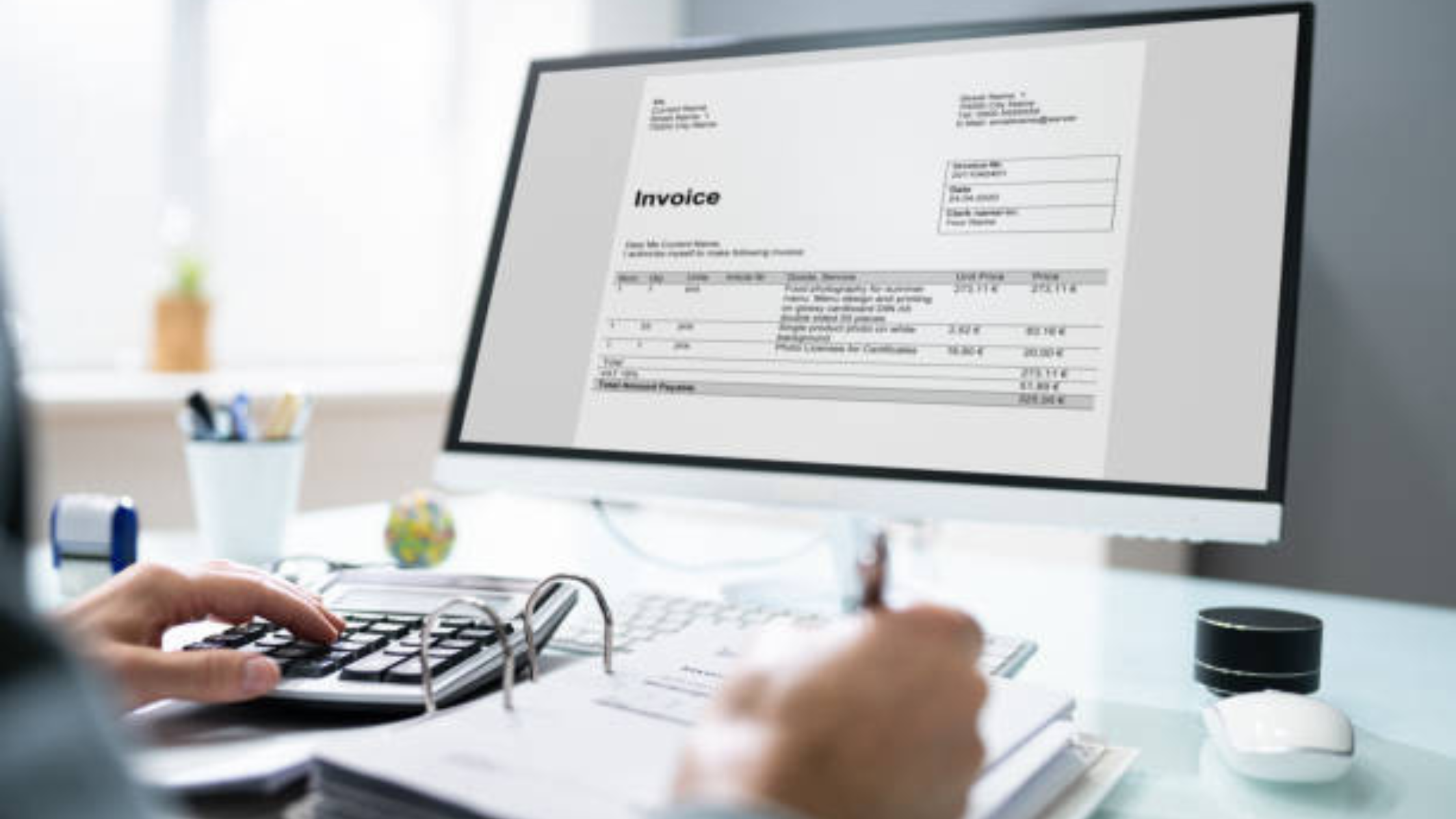The Ultimate Guide to Creating Cab Bills with Attractive Templates

Crafting Visually Appealing Cab Bills
Efficiency and professionalism are essential in today's fast-paced world, even in the smallest tasks like creating cab bills. A well-designed cab bill not only acts as a transaction record but also reflects positively on your business. This guide explores the art of crafting visually appealing cab bills that are both aesthetically pleasing and functional. From selecting templates to incorporating brand elements, every step is covered to ensure your cab bills stand out. Whether you're a cab driver aiming to impress passengers or a business owner streamlining billing processes, this resource is tailored for you. Prepare to enhance your cab billing approach and make a lasting impact with professionally designed documents!.
Understanding Cab Bills
In the realm of business operations, the significance of cab bills cannot be overstated. It is essential to comprehend the intricacies involved in these documents, as they play a crucial role in financial management and regulatory compliance. Let's delve into the definition and importance of cab bills as well as explore the key components that constitute a typical cab bill.
Definition and Importance in Business Operations
Cab bills are detailed records of transportation expenses incurred by a company for its employees or clients. These bills serve as official documentation of the costs associated with utilizing cab services for business purposes. From a business operations perspective, cab bills are vital for several reasons:.
Financial Tracking : Cab bills provide a clear breakdown of transportation expenses, enabling businesses to track and manage their spending in this area.
Tax Compliance : Proper documentation of cab bills is essential for tax purposes, as these expenses may be tax-deductible based on local regulations.
Cost Control : Analyzing cab bills helps businesses identify opportunities to optimize transportation costs and improve overall efficiency.
Key Components of a Cab Bill
While the specific format may vary, a standard cab bill typically includes the following key components:.
Company Information : Details of the company utilizing the cab services, including name, address, and contact information.
Trip Details : Information about each trip, such as the date, time, pick-up location, drop-off location, distance traveled, and purpose of the trip.
Fare Breakdown : A breakdown of the fare, including base fare, waiting charges, tolls (if applicable), and total amount due.
Driver Details : Name of the driver, driver's license number, vehicle details, and any relevant driver information.
Payment Information : Details of the payment method used, total amount paid, and any outstanding balance or tips given.
Additional Information
Apart from the key components mentioned above, modern cab bills may also include sustainability metrics, such as carbon emissions offset for eco-friendly rides. Integrating technology, some cab bills now offer real-time tracking links for passengers for enhanced transparency and safety.
Moreover, with the rise of ride-sharing services, cab bills may contain information on ride-sharing partners and split fare details for shared trips, catering to the evolving needs of businesses and commuters alike.
By understanding the role of cab bills in business operations, leveraging technology advancements, and adapting to changing transportation trends, organizations can not only streamline their expense management processes but also enhance the overall travel experience for their employees or clients.
Benefits of Eye-catching Templates
Having eye-catching templates can significantly impact businesses in various ways. Let's delve into the benefits of utilizing such templates:.
- Enhanced Brand Image and Professionalism
Eye-catching templates help create a strong brand image and convey professionalism to clients and customers. Consistent use of visually appealing templates across communication channels can leave a lasting impression. These templates can be customized to reflect the brand's colors, fonts, and overall style, ensuring a cohesive brand identity in all interactions.
- Efficient Organization and Record-keeping
Templates provide a structured format for organizing information. Whether it's for invoices, reports, or presentations, using templates ensures that data is systematically arranged, making it easier to retrieve and maintain records. Additionally, templates can include placeholders for essential information, reducing the chances of errors and ensuring consistency in document formatting. This systematic approach not only saves time but also minimizes the risk of data mismanagement.
- Time-saving and Convenience
By using pre-designed templates, businesses can save time on formatting and designing documents from scratch. This not only enhances efficiency but also allows employees to focus on core tasks, ultimately improving productivity and workflow. Moreover, templates can be easily updated to align with any changes in branding or information, ensuring that documents remain current and relevant.
- Consistency in Communication
Eye-catching templates facilitate consistency in communication both internally and externally. Employees can use standardized templates for emails, memos, and other correspondence, maintaining a professional tone and visual identity. Externally, clients and partners receive cohesive messages that reinforce the brand's values and credibility.
- Increased Engagement and Brand Recall
Eye-catching templates have the potential to increase engagement with the audience. Visual appeal captures attention and makes information more memorable. By incorporating unique design elements and graphics, templates can enhance brand recall, ensuring that the audience associates specific visual cues with the brand, leading to better brand recognition.
- Adaptability and Scalability
Templates offer adaptability across various platforms and devices. With responsive design features, templates can be optimized for different screen sizes, ensuring a consistent user experience. Moreover, templates can be scaled to meet the needs of different departments within an organization, providing a standardized format for diverse communication requirements.
Incorporating eye-catching templates into business operations can yield numerous advantages, from enhancing brand image to streamlining processes and saving time. These templates not only enhance the visual appeal of documents but also contribute to efficient communication, organized record-keeping, and overall brand consistency. By leveraging the power of well-designed templates, businesses can elevate their professionalism, improve operational efficiency, and make a memorable impact on their audience.
Designing Your Template
When it comes to designing your template, selecting the right tools and software is crucial. Consider using platforms like Adobe Photoshop, Illustrator, or online tools like Canva for creating visually appealing templates. These tools offer a wide range of features and templates that can help you bring your creative vision to life.
Incorporating Essential Information
Ensure your template includes all essential information such as contact details, company logo, social media links, and any other pertinent information that is relevant to the purpose of the template. Additionally, consider incorporating placeholders for personalized content to make the template versatile for different uses.
Branding Elements Integration
To maintain brand consistency, integrate your company's branding elements into the template. This includes using the company colors, logo, and any specific brand elements that help in immediate recognition. Consistency in branding across all your materials builds trust and recognition among your audience.
Color Palettes and Fonts for Visual Appeal
Choose color palettes that resonate with your brand and evoke the right emotions. Consider the psychology of colors and how different hues can impact the viewer's perception. Additionally, pay attention to font selection for readability and visual appeal. A well-chosen font not only enhances readability but also conveys the tone and personality of your brand. Combining appropriate colors and fonts can greatly enhance the overall aesthetic of your template design, making it visually engaging and memorable.
Testing and Feedback
Once you have designed your template, it's essential to test it across different devices and platforms to ensure compatibility and responsiveness. Seek feedback from colleagues or target users to gather insights on the template's effectiveness and make necessary adjustments. Iterative testing and feedback help in refining your template for optimal performance and user experience.
Optimization for SEO
If your template is intended for online use, consider optimizing it for search engines. Incorporate relevant keywords, meta tags, and descriptions to improve visibility and search engine ranking. A well-optimized template can drive traffic to your website or platform, enhancing your online presence and reach.
Conclusion
Designing a template requires a thoughtful approach that considers not just aesthetics but also functionality and brand representation. By selecting the right tools, integrating essential information, maintaining brand consistency, and focusing on visual appeal, you can create templates that leave a lasting impression on your audience. Remember to continuously evaluate and update your templates to stay relevant and effective in your communications.
Customization Tips
Adding Company Logo and Details
When customizing your website, it's essential to incorporate your company's logo and details to maintain brand identity. Uploading your logo and providing accurate company information can help establish credibility and trust with your audience. Your company logo is the face of your brand, so make sure it is prominently displayed on your website. Additionally, including details such as your company's mission statement, contact information, and a brief overview can give visitors a better understanding of who you are and what you offer.
Tailoring Layout to Business Needs
Every business is unique, and your website should reflect that. Consider tailoring the layout of your website to align with your specific business needs. Whether it's showcasing products, highlighting services, or providing valuable content, optimizing the layout can enhance user experience and drive conversions. A well-designed layout can guide visitors through your site, making it easy for them to find what they are looking for. Pay attention to the placement of key elements such as call-to-action buttons, contact forms, and product images to ensure a seamless user journey.
Choosing Color Schemes Wisely
Color plays a significant role in web design as it can evoke emotions and influence user behavior. When customizing your website, choose color schemes that resonate with your brand and appeal to your target audience. Consider the psychology of colors - for example, blue can convey trust and professionalism, while green is often associated with nature and health. Consistency in color usage across your website can help reinforce brand recognition and create a visually appealing experience for visitors.
Optimizing for Mobile Responsiveness
With the increasing use of mobile devices, ensuring that your website is mobile-responsive is crucial. Customizing your site to be mobile-friendly means that it adapts seamlessly to different screen sizes and devices, providing a consistent experience for users no matter how they access your site. Test your website on various devices to ensure that all elements are displayed correctly and that navigation is user-friendly on mobile platforms.
Incorporating Personalized Content
Personalization is key to engaging visitors and making them feel valued. Tailor your content to address the specific needs and interests of your target audience. This could involve creating personalized product recommendations, displaying targeted offers based on user behavior, or using dynamic content that changes based on user interactions. By customizing the content on your website, you can increase engagement, encourage repeat visits, and ultimately drive conversions.
Ensuring Billing Efficiency
In the healthcare industry, efficient billing processes are crucial for maintaining financial health and ensuring smooth operations. By implementing the following strategies, healthcare providers can streamline their billing practices and achieve greater efficiency.
Consistent Formatting for Professionalism
Maintaining a standardized format for all billing documents not only enhances the professional image of the organization but also simplifies the billing process. By ensuring that invoices, statements, and receipts follow a consistent layout, healthcare providers can minimize errors and confusion, leading to faster processing and payment.
Regular Updates for Accuracy
To prevent billing discrepancies and delays, it is essential to regularly update patient information, insurance details, and fee schedules. By keeping billing records current and accurate, healthcare providers can avoid common billing errors and reduce the risk of claim denials. Implementing regular audits and reviews can help identify and rectify any inaccuracies promptly.
Detailed Records for Audits and Compliance
Maintaining detailed and organized billing records is crucial for ensuring compliance with healthcare regulations and facilitating audits. By documenting all financial transactions, coding procedures, and billing communications, healthcare providers can demonstrate transparency and accountability. Additionally, detailed records serve as valuable references for internal reviews, external audits, and legal inquiries.
Embracing Technology for Streamlined Processes
Healthcare providers can leverage billing software and electronic health records (EHR) systems to automate billing tasks, reduce manual errors, and improve billing accuracy. By integrating technology solutions tailored to the healthcare industry, organizations can enhance efficiency, track billing metrics, and generate real-time reports for performance analysis.
Staff Training and Education for Enhanced Billing Practices
Investing in ongoing training programs for billing staff can significantly impact billing efficiency. By equipping employees with up-to-date knowledge on coding regulations, insurance requirements, and billing best practices, healthcare providers can empower their teams to handle complex billing scenarios with confidence and accuracy.
Collaborating with Payers for Clear Communication
Establishing open lines of communication with insurance companies and payers is essential for resolving billing issues promptly and ensuring timely payments. By proactively engaging with payers to address claim denials, billing inquiries, and reimbursement processes, healthcare providers can foster positive relationships and expedite revenue cycles.
By incorporating these practices into their billing operations, healthcare providers can enhance efficiency, accuracy, and compliance, ultimately improving revenue cycles, reducing financial risks, and increasing patient satisfaction.
Conclusion
Creating cab bills with attractive templates not only enhances the professionalism of the business but also provides a visually appealing document for both the service provider and the customer. By following the ultimate guide outlined in this blog, businesses can streamline their billing process, improve customer satisfaction, and stand out in a competitive market. Embracing the use of attractive templates for cab bills is a simple yet effective way to elevate the overall customer experience and leave a lasting impression.







